It is pretty easy to shop for an HF radio – just about all of the major models have the basics that you need. But it gets a little more complicated when shopping for a VHF/UHF radio.
Modulation
Most radios that transmit on 144 MHz and above are FM-only. You can do a lot with FM, but most weak signal work is done using SSB modulation. SSB is more efficient since the signal is concentrated over much less bandwidth than with FM. That mobile radio on sale may look like a good buy, but if it is FM-only then it won’t help you much.
Bands
Once you find a radio with SSB capability you als have to be mindful about which bands are available. The bands that are easiest to get are 2 M and 70 cm. With more rigs available on those bands you will also find the most activity falls on those frequencies.
A Starting Point
The easiest way to get into weak signal work on VHF may be with the radio you already have . . . . Most HF transceivers also have the 6-meter band available. Of all the VHF bands, this one generally provides the strongest signals and the greatest range. The Alaska VHF-Up Group is also heavily pushing 6 M activity, so if you have an “HF+6” radio then you are good to go.
Above 2 Meters
Gear for the 1.25 M band is definitely harder to find. There are some FM-only rigs out there that will get you going, but if you need SSB capability a transverter may be the way to go.
The same thing is true for gear in the GHz bands. Options get scarce, and you begin seeing more kit-built and homemade transceivers and transverters than factory built radios.
Radios
Used models can allow you to save a lot of money. A recent vintage radio that has been well cared for can be expected to last quite a while. Look below for some good options that you might find on eBay or other used gear sites:
Icom 706 (Mk II, Mk II G)
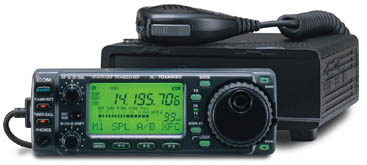
This is a really nice mobile radio that offers “DC to daylight” in one package. It is a little large for backpack portable use, although it could be done. These radios are really popular for setting up field day style in parks, for Parks on the Air, Islands on the Air, or similar activities.
Be mindful when shopping for one of these though. The VHF/UHF capabilities are different depending on whether you get an IC-706, IC-706 Mk II, or an IC-706 Mk II G.
Icom 7100
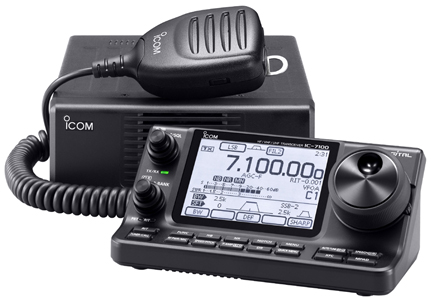
As of 2021 this model is still in production and can be bought new. Think of it as the smaller successor to the 706.
Yaesu 897
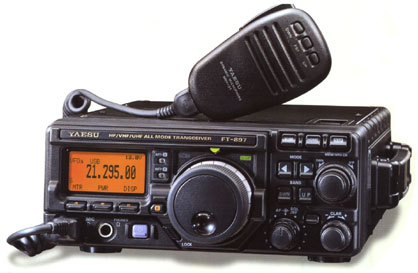
The Yaesu 897 is another DC to daylight rig, but what sets this one apart is that is was designed for portable operating. It comes with an internal battery pack that makes it easy to take this radio into the field. This is a good option for any portable or contest station.
Icom 705
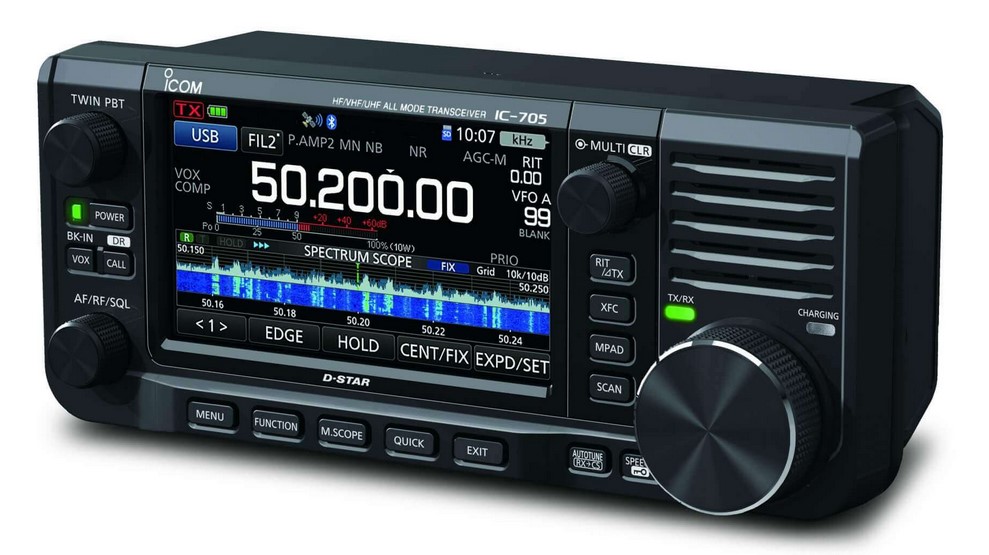
This is the new kid on the portable operating block, and has really changed the game for portable operating. The radio only has 5 watts output, but when operating from a high location with a gain antenna that is enough to do well her in Alaska.
This radio was purpose built for portable digital operating, and offers a lot of advantages to users. USB connectivity, touchscreen, and an internal battery pack are just a few of the benefits. Be prepared for some sticker shock though when you see the price.
Yaesu 817 and Yaesu 818
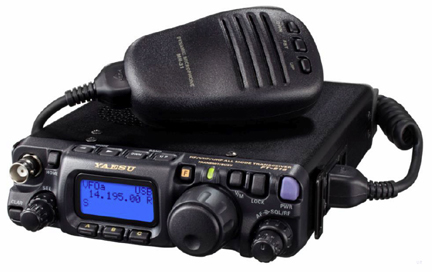
The Yaesu 817 was long the gold standard for portable operating. The “818” upgrade is a really more of a (disappointing) facelift than an upgrade, but both are excellent radios.
With an internal battery pack and all-band, all-mode capability these radios are a great way to get started in VHF work, especially since used prices are so low now.
The drawback of both the Yaesu 81X and Icom 705 is that you only have five watts of output. You won’t be doing moonbounce with these radios, but with a gain antenna and a high location you can work all of the Anchorage bowl and most of the Kenai Peninsula. (We know – we’ve done it!)
Something to think about is that the Yaesu 81X and Icom 705 are both just small enough to serve double-duty as a handheld, if you wish.
While a proper handheld is more convenient in hand, they also cost. Using the 817, 818, or 705 for occasional handheld duty may be worth it if it helps keep your costs down.
In particular, the Yaesu 817 has been available for fire sale prices on ebay ever since the 818 and Icom 705 debuted.
A careful shopper can have a five watt, all-band, all-mode radio for less than the price of some FM-only, five watt handhelds.
Yaesu 857
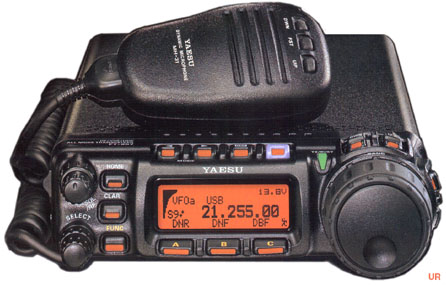
The Yaesu 857 is another mobile-format transceiver that operates on HF, 6 meters, 2 meters, and 70 centimeters. The big advantage to this radio is it’s power output. It is also physically larger, heavier, and draws more current than the backpack-portable 817, 818, or Icom 705 though.
This radio makes for an excellent choice when doing Parks on the Air, field day, or VHF contests.
Yaesu 991
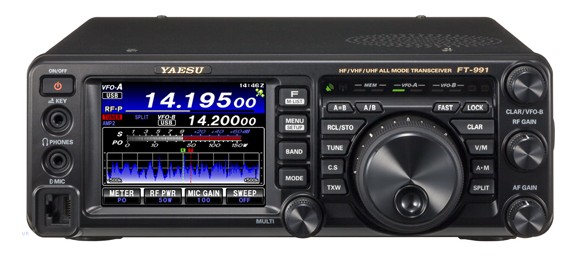
The Yaesu 991 is a current production model that covers HF, VHF, and UHF (70 cm). As is becoming the standard, this radio is DSP-based and offers a touchscreen with a large color display. The size of the radio likely keeps it out of the “backpack portable” category, but it would work perfectly for field day or Parks on the Air style portable operating.
Icom 9700
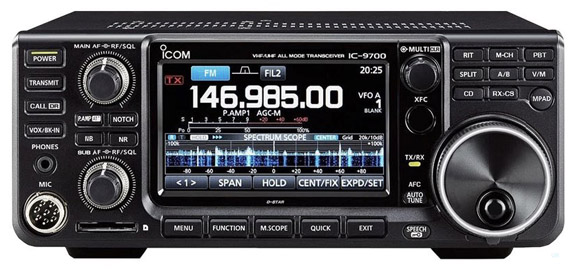
An interesting example of a specialized VHF+ rig is the Icom IC-9700. This radio has 2 meters, 440 and 1.2 GHz built in, making it perfect for working satellites or terrestrial VHF/UHF operations.
The lack of 6 meter capability is deliberate – the intended buyer of this radio is a ham who already has an HF+6 transceiver, and wants to add capability without doubling up on band coverage. If you’re in that category then this may be the rig for you.
Once you have a radio you’re going to have to get that signal out into the wild. That’s where antennas come in. Follow the link below to learn about antennas for long-distance work.
